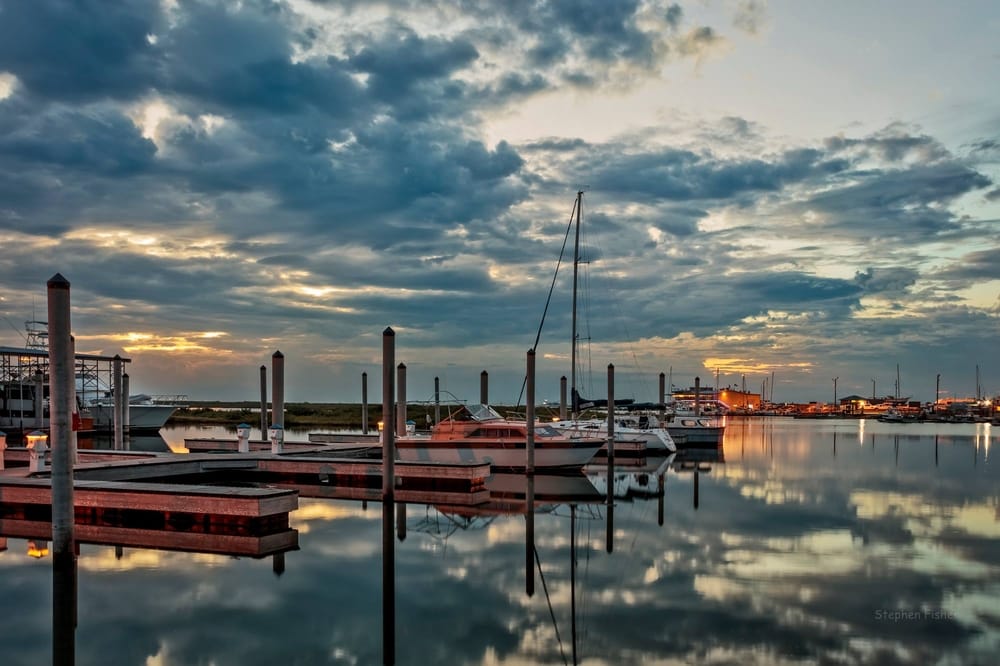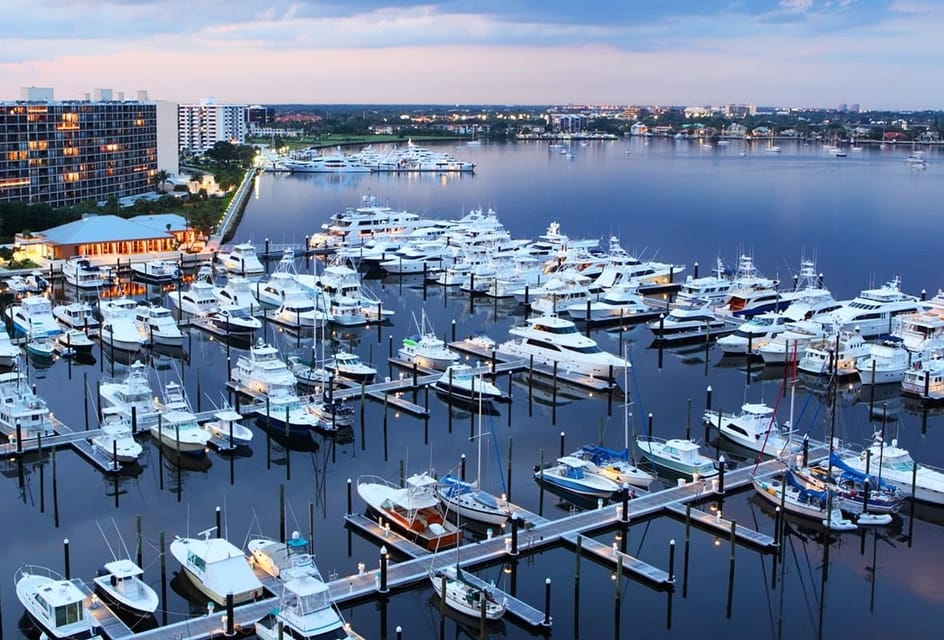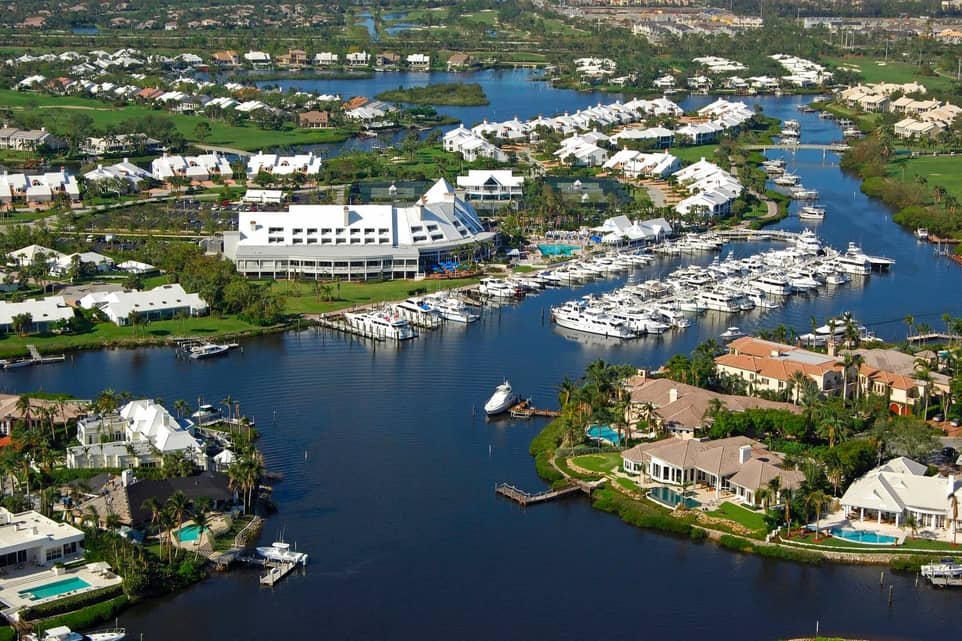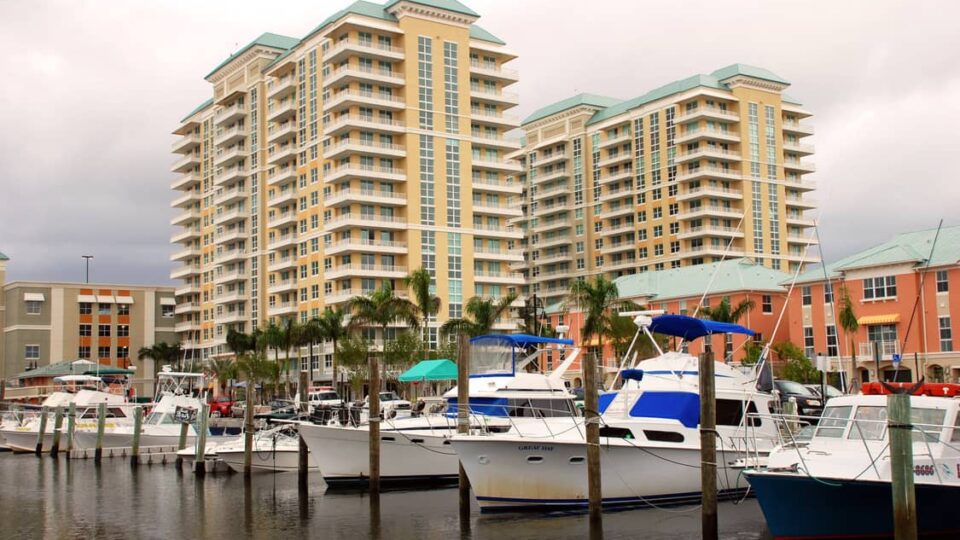Living on a Boat in Texas: What you Need to Know (Best Liveaboard Marinas, Costs, etc)
People will either think it’s the best thing ever or that you’re essentially homeless if you tell them you live on a boat. If you live at anchor, this is especially true. By law, live a-boards are only allowed at waters leading to the sea. This happens in Texas, as well as in other US states and countries throughout the world. Examples include the Trinity River, Lake Livingston, Lake Houston, and surrounding Bays and Sounds. Texas has some of the most permissive liveaboard laws in the country, making it an excellent choice for liveaboards. If you plan to liveaboard in Texas, it’s important to research the costs and marinas to find out about their laws and where you can anchor long-term if necessary. So, in this article, I will give information about the liveaboard life in Texas, the marinas, as well as the general costs. Follow me!
Information about the Liveaboard Life in Texas
Texas is a place with reasonable liveaboard fees, delicious food, and easy access to the South. There are many beautiful seaside towns and marinas to visit or stay. Many marinas are brand new and state-of-the-art, and some of them haven’t yet experienced the price explosion that has afflicted other popular destinations. Currently, a nice marina space costs around $350 per month. This is much less than anywhere around Tampa Bay or New York in the north. The food is excellent, there is a wide range of bars and restaurants as well as numerous activities to engage in. Liveaboard communities are vibrant and the state of Texas has fair liveaboard laws.
Certain Texas marinas also allow you to pay for your slip annually rather than monthly, which can save you a lot of money. A slip appropriate for a boat up to 60 feet can generally be had for around $4,200 per year or $350 per month. It would be helpful if you can have an idea of the pricing range you’re searching for. For instance, Palacios, Port Lavaca, and Ingleside all have affordable marinas that I believe allow liveaboards. Island Moorings in Port Aransas is more pricey yet nicer. In Rockport, there are several lovely marinas, but they don’t all allow liveaboards. Matagorda Harbor Marina is now offering a nice discount. They have brand new floating docks, $200 floating slips (40 feet), and convenient gulf access.

>>Also Read: Living on a Boat in California: What you Need to Know
Liveaboard Laws in Texas
In the state of Texas, there are currently no laws preventing liveaboards, although there are various local ordinances that require additional paperwork and taxes. If you live full time on your boat in a marina, Corpus Cristi, for example, demands you to take out a form and pay a fee. In some cases, you could stay at the marina part of the time and anchor elsewhere the rest of the time to avoid the paperwork and fees. It’s a good idea to contact local officials or even marina owners in the city where you’re interested. This will provide you with some insider information, and they may often offer ways to save you time and money.
If you decide to liveaboard in Texas, make contact with several cities and marinas to inquire about their policies on living aboard your boat and where you can anchor long-term if needed. Then you must consider whether the added hassle of living anchored for the majority of the time is worth it. Or, whether it is preferable to pay the marina or town mooring costs. Texas, as one of the most laid-back states for liveaboards, can be an excellent choice. As with other states, each city will frequently have its own set of local laws and regulations, so do your research before deciding where you wish to moor your boat.
Information about Liveaboard Marinas in Texas
The marina you will choose to live on your boat will determine a big part of your budget. A significant amount of your overall charges will be determined by that. Smaller powerboats that are brought in and out of the water on a regular basis will not require a monthly mooring or dock slip. But, trailers can cost anywhere from $2,000 to $5,000.
The cost of a slip is determined by the location, design, and size of your boat. A 28-foot covered slip at Lewisville Lake’s Cottonwood Creek Marina, for example, costs around $4,000 per month. A slip at the Bayland Marina on the Gulf Coast costs roughly $2 per foot per night. It varies across Texas, so do some research on the slip rate in the area where you’ll be staying. This has to happen before buying the boat. Like this, you will have a better idea of the overall financial picture.
Island Moorings is a lovely place to stay. Port Aransas is a wonderful town, although it is primarily a tourist destination. The marina is beautiful, well-run, and bustling. The slip costs around $350, including electricity. Port A is a great spot, but they don’t have any 40′ (or 50′) slips. You might be able to get a slip on the new transient pier. For a storm, this location is extremely vulnerable. Palacios and Port Lavaca are pleasant areas with inexpensive marinas, but they are a great way from any sailing opportunities. There is also a marina in Port O’Connor, St Christopher marina. These are all lovely small Texas towns. Palacios is a shrimper’s paradise. Port O’Connor is a tourist town with fishermen, while Port Lavaca is a tiny town with a lot of people.
Ingleside’s Bahia is in a nice location and is reasonably priced. It’s a different kind of environment. I believe that most people will either like it or dislike it, so you should go check it out to see if it is right for you. It is a very lively and easygoing marina with a $25 liveaboard fee. The Matagorda Marina is a wonderful marina at a good price. It’s a busy marina, and largely for fishermen. Although it has good gulf access, it is located far from any bay sailing options. Island Moorings Marina is great. But, there’s the exception of a small draft (about 5′) and bugs in the summer. Hurricane protection is excellent.
Keep in mind that there are no 40′ slips in the new part of Corpus Christi City Marina. You’d either be stuck in the old section or in the new section. But, the marina has a fantastic position in the heart of the city. This is a great experience of liveaboards. Key Allegro does not accept liveaboards in the Rockport region. At Cove Harbor, there is a new marina which is one of the quietest places to live in. Lastly, the Fulton Marina is surrounded by fixed piers and is highly exposed.

>>Also Read: Best Sailing Destinations in the Gulf of Mexico
Best Marinas in Texas
- Alice Faye’s on the Bay Marina, Rockport-Fulton
- Cove Harbor Marina, Rockport
- Fulton Beach Marina, Fulton
- Bal Harbor Marina, Nassau Bay
- Seabrook Marina, Seabrook
- Sea Ranch Marina, South Padre Island
- Port Aransas Marina, Port Aransas
- Island Moorings Marina, Port Aransas
- Corpus Christi Marina, Corpus Christi
- City of Port Isabel City Docks, Port Isabel Channel
- Cypress Creek Marina, Lake Travis
- Bastrop Marina, Freeport
- Bridge Harbor Yacht Club, Freeport
- Kirby Marina, Freeport
- Eagle Point Fishing Camp Marina, San Leon
- San Leon Marina, San Leon
- Galveston Yacht Basin, Galveston
- Teakwood Marina, Galveston
- Kemah Boardwalk Marina, Kemah
- Waterford Harbor Yacht Club, Kemah
- Lakewood Yacht Club, Seabrook
- Clear Lake Marine Center, Seabrook
- Hopper’s Landing Marina, Austwell
- Houston Yacht Club, La Porte
- Harbor Bay Marina, Lake Ray Hubbard
- Harbor One Marina, Eagle Mountain Lake
- Highview Marina – Lake Bardwell
- Harbor Inn Marina, Richland-Chambers Lake
- Holiday Shores Marina – Lake Livingston
- Hurst Harbor Marina – Lake Travis
Cost of Owning a Boat in Texas
The cost of owning a boat is determined by the type of boat you want to buy. Jet Skis are the cheapest way to get into boating, costing anywhere from $6,000 to $10,000 but with fewer expenses than larger powerboats or sailboats. However, all boats will have to pay for fuel, maintenance, insurance, and other expenses. Pontoon boats, outboard motorboats, inboard motorboats, and sailboats are the four types of boats you’ll see whether you’re on one of Texas’ many lovely lakes or cruise the bays and oceans of the Texas coast. Each comes with its own set of costs. Bear in mind that small sailing dinghies may demand more fuel than powerful speedboats.
It’s important to note that sails and rigging will need to be replaced on a regular basis on larger sailing vessels. The age and condition of a boat will also have an impact on the expense of continuing maintenance. In general, Texas liveaboards are lucky. Summers are hot, and winters are mild, so you can normally use your boat all year.
However, your boat will need to come out of the water for maintenance or protection during hurricane season. And, this is why winterizing and storage is a crucial (and frequently underestimated) cost of boat ownership. The average cost of hauling out is $26 per foot. Then you’ll have to pay $10 to $15 per foot to shrink-wrap your boat for storage, plus another $50 per foot to store it. In total, the full package may cost as much as $91 per foot, which is a significant cost to consider if your boat requires annual maintenance.
Maintenance is one of the expenditures of owning a boat that might be difficult to estimate, even if it isn’t fully concealed. The wear and tear on the boat’s systems and equipment will be greater in saltwater than in freshwater. Like car maintenance, some years may go by without requiring much attention, while other years everything seems to fail at once. The amount of annual maintenance you can expect depends on the boat’s age and condition. Prepare to spend up to ten percent of the total worth of your boat on annual upkeep. These expenses will also be determined by whether you hire professionals to complete the repair or whether you can perform some maintenance yourself.

>>Also Read: Best Sailing Lakes in Texas
Fuel, Insurance and Other Important Considerations for Liveaboards
The cost of gasoline on an annual basis is determined by the type of boat and how often you use it. Some motorboats can consume up to 30 gallons of gas every hour. If you burn gasoline at that pace and spend five hours on the water each day, you’ll use 100 to 150 gallons of gas every day. Depending on how often you use your boat, you could end up spending thousands of dollars on gas each year. In other words, fuel expenditures should be factored into your budget.
Bear in mind that every year, thousands of watercraft accidents occur in Texas, with hundreds of people killed and millions of dollars in property damage. Meaning that boat insurance is a must-have. Fortunately, your Texas Farm Bureau Insurance Agent will be able to assist you with the insurance procedure. So, you should contact your Texas Farm Bureau Insurance Agent to learn more about the policies applied to you.
And, like anything new you buy for your boat, you’ll want to update after a while. Every boat, whether it’s for new engines, onboard fishing gear, new sails, or rigging, will require investment over time. A brand-new fishfinder, for example, might cost upwards of $900. The cost of a radar system for an offshore sailboat might be in the thousands of dollars. So, don’t forget to budget for keeping your onboard safety equipment up to date and in good working order.
Regrettably, your boat, like your automobile, begins to lose value as soon as you take possession of the keys. While depreciation expenses vary depending on the boat’s make, model, age, and condition, a fair rule of thumb is to assume a 10% depreciation the first year and a 7% depreciation the following years. When it comes time to sell your boat, there are other hidden charges to consider. Allow eight months to promote your boat, as well as a 10% to 15% brokerage charge after the purchase is closed.
>>Also Read: Living on a Boat in Florida – Best Liveaboard Marinas, Costs and Tips
Hurricane Season in Texas
The Atlantic hurricane season runs from June 1 to November 30 and is expected to be busy, according to meteorologists. The Climate Prediction Center of the National Oceanic and Atmospheric Administration predicts an above-normal hurricane season. The National Oceanic and Atmospheric Administration (NOAA) predicts 13 to 20 named storms in 2021. In addition, winds of 39 mph or higher. Six to ten of them might become hurricanes (winds of 74 mph or more), with three to five of them being major hurricanes (category 3, 4, or 5; with winds of 111 mph or higher).
So, as a liveaboard, it’s important to keep an eye on the weather forecast. In case a storm is expected to make landfall, you have to stay away from the boat. Forecast conditions can be found on the websites of the National Weather Service and the National Hurricane Center. Also, you should always check the marina’s hurricane plan. If the storm or hurricane is five days out, some marinas will begin to evacuate workers and shut down areas and services. The weather may be sunny and blue skies on the day you arrive, but the marina’s personnel is prepared for the storm’s potential threats.
Moreover, you have to be patient when a storm passes. Even if the storm didn’t pass through the area, some marinas are going to close for a specific amount of time. Most personnel are picking up and removing debris caused by the hurricane’s strong winds.
Keep in mind that flooding along the coast should be avoided. Coastal flooding can be caused by low-pressure storms in the Gulf of Mexico, even hundreds of miles away from the marinas. Water can sometimes reach all the way to the beach sand dunes, closing off a shoreline due to the standing water. During this period, you will not be able to drive on the beach. Lastly, rip currents exist and are extremely dangerous. Rip currents arise in low regions or cracks in sandbars, as well as around constructions like groins, jetties, and piers. Beachgoers must be mindful of rip currents even on a quiet day.
>>Also Read: Living on a Boat in New York
Living on a Boat in Texas – The Bottom Line
The two happiest days in a boat owner’s life, according to the traditional proverb, are the day they buy the boat and the day they sell it. The days in between, however, do not have to be stressful and anxious. Each day on the water may be well worth the money with some serious planning and the right budgeting. Hopefully, you now have a good idea of whether Texas is the right place to live for you. However, before arranging your liveaboard lifestyle, you should always contact the marina of your choosing.
In Texas, you can live on your boat in an affordable way of living in comparison with California or New York. The weather is often favorable, and there are countless chances and activities to select from. Spend your next holiday anchored at one of the marinas to get a feel for the place if you’re not sure if you want to live there full-time. It can offer you a taste of what your life could be like if you decide to take the next step. And, there are many vibrant marinas in Texas with reasonable slip fees to choose from. Lastly, the liveaboard laws in the state of Texas are favorable for boaters.
I wish that this article gave you a grasp of things about the liveaboard life in Texas. If you plan ahead and do some thorough research it’s not that hard and life there is great. Wish you the best!
